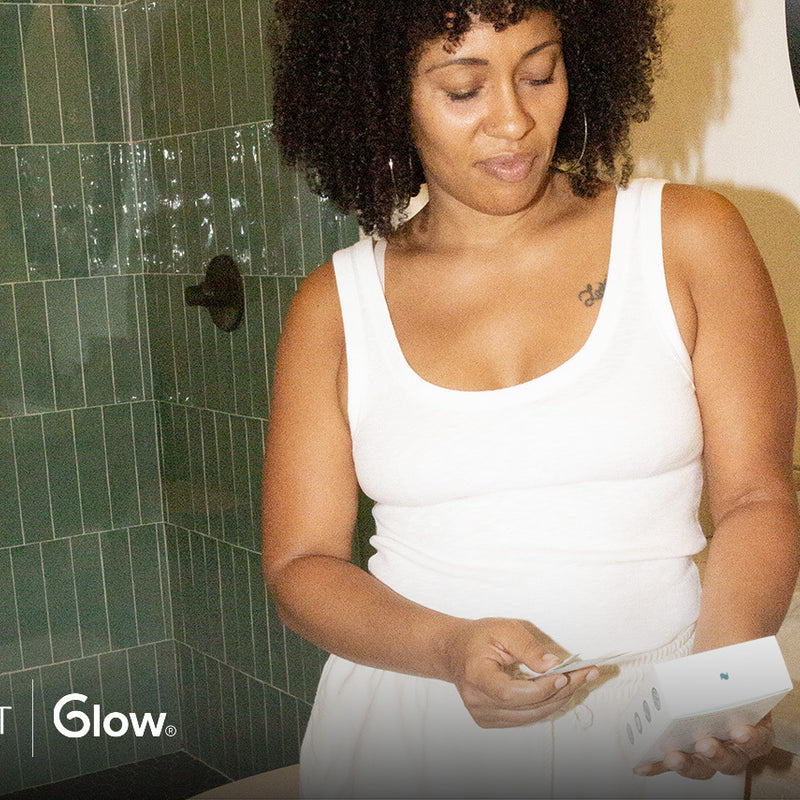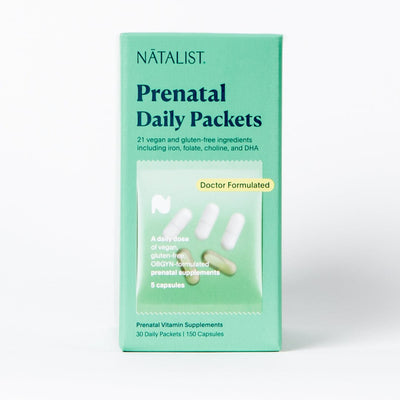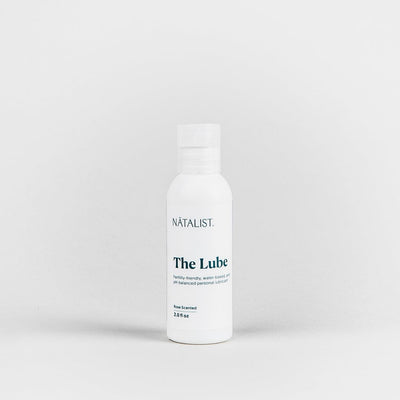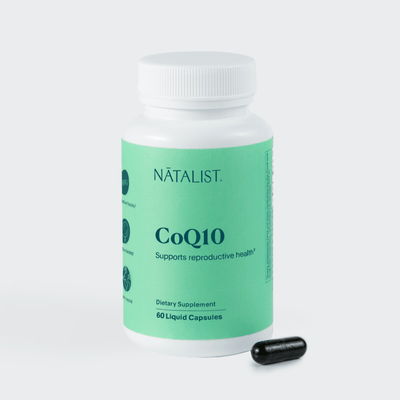When Are You Most Fertile and Likely to Get Pregnant?

Learn how to determine when you are most fertile and likely to conceive.
You’ve made the exciting decision to try to have a baby! Contrary to what you might have seen in the movies, every one-night stand does not result in pregnancy. In fact, there’s a time frame, known as the “fertile window” which marks the optimal time for trying to conceive.We’ve written this article to help explain the menstrual cycle and how to best time sex for baby-making. And if you want your partner to also join you on the fertility journey, you could have him try an at-home sperm test kit so you both understand your bodies.
And a little personal disclosure: I laugh to myself because for a good 15 years of my life, I accepted my monthly period without really understanding what was going on in my body. It wasn’t until medical school that I actually started putting the pieces together of how AMAZING our bodies are. Hope I can convince you to share the enthusiasm.
Your body and the menstrual cycle
Did you know that most women are born with one to two million eggs in their ovaries? It’s their entire lifetime supply. These eggs are immature, and most of them will never have the chance to become fertilized. The way we talk about this lifetime supply can make it sound like you have two million chances to conceive, but it’s actually way less. Only about 300 – 500 of these eggs will mature over a woman’s life span.
Puberty not only marks an era of awkwardness and flailings with training bras for many of us, but also the time when certain hormones (we’ll get to which ones next) are released to help the eggs embark on this maturation journey. Herein lies the start of menses (or periods, in lay terms), called menarche.
Four hormones play a part in the regular drama that is the menstrual cycle. Two of these hormones are produced in the brain: follicle stimulating hormone (FSH) and luteinizing hormone (LH) and two of them are produced in the ovaries:progesterone and estrogen.
On day one of their period, women are in what’s called the follicular phase of their cycle. This phase is named for the follicle, a fluid-filled sac in the ovary that holds an immature egg. This is a question you’re almost always asked at the OBGYN office: when was your last menstrual period? What a provider really wants to know is “what was the first day of your last menstrual period?” This helps us to understand how regular your cycles are and when you might be ovulating.
What happens next is a cascade of activity you wouldn’t even know is happening: FSH gets the party started by telling the ovaries to begin to mature the tiny eggs they hold. As follicles grow, they make more estrogen,signaling to the uterus that it’s time to thicken its lining (the endometrium) and telling the brain it’s time to puppeteer the ovulation process. So at the same time that your ovary is going through the follicular phase, we name the phase of thickening of the uterine lining as the proliferative phase.
While there were many follicles recruited to start the maturation process, only one of them is picked to release—the dominant egg. The estrogen-hyped brain releases LH, telling one of the ovaries it is time to release its dominant egg (the ovaries usually take turns doing this—though the work isn’t always evenly split between the two). This is the main event: ovulation. A now-mature egg breaks out of its follicle and through the ovarian wall, journeying down the fallopian tube where it'll wait for sperm to fertilize it.
Meanwhile, the follicle transforms (seriously) into a little hormone factory called the corpus luteum, and it turns the uterus into a cozy home where a fertilized embryo can thrive. How? By releasing progesterone to support the build-up of the uterine lining. In terms of the ovaries, this is called the luteal phase of your cycle. The transformation of the uterine lining from progesterone is referred to as the secretory phase.
If the egg on deck does meet a sperm and all other conditions are right, then the fertilized egg may turn into a pregnancy! If it doesn’t, then a regular period ensues, as usual. This is because, in the absence of fertilization, the corpus luteum will stop hormone production and break down. No more hormones mean no more thickening of the uterine lining, and the drop in hormones in the body signals time for the lining to shed, which you may notice as that bloody mess, Aunt Flo.
Despite the requisite discomfort a menstrual cycle can bring, the female body is incredibly impressive in this way. During every cycle, it’s going through a laborious process to prepare the perfect environment just in case it receives and needs to nurture a fertilized egg, whether or not a woman is interested in conceiving.
The average adult menstrual cycle lasts 28 to 35 days, with approximately 14 to 21 days in the follicular phase and 14 days in the luteal phase. Menstrual cycles as frequent as 25 days still generally result in ovulation. There’s a lot of variability among women, and that’s okay. If your frequency is more or less than this, talk to an OBGYN to figure out what may be going on.
So When Are You Most Fertile?
Right, so back to the whole point of the article. A person’s “fertile window” is clinically defined as the six-day window that includes the five days before ovulation and the day of ovulation. This is when your chances of conceiving are the highest. So, how often should you have sex during ovulation? Experts recommend having sex daily or every other day during this time, especially the 2 or 3 days right before you ovulate. This is when your chances of conceiving are the highest.
Natalist has products to support you no matter where you are on your family planning journey. Take our quiz to get curated product suggestions that are right for you!
How Do You Know You’re Ovulating?
We’ve laid the groundwork of how the menstrual cycle works. Let’s put it to use and figure out how to identify the fertile window. The truth is, no test will immediately tell you the precise start of your fertile window for the current month you are tracking. The available methods for detecting ovulation can help us establish patterns that we can use to understand the fertile window for future months. Currently, ovulation tests allow you to capture a portion of your fertile window for the month you are tracking: the last 1-2 days when you are at peak fertility.
There are three traditional methods for detecting ovulation at home: checking cervical mucus (or vaginal discharge), checking basal body temperature, and checking for the luteinizing hormone (LH) in urine.
Cervical mucus
Vaginal discharge: we’ve all seen it on our underwear before. Embrace it, ladies! It helps protect our vagina from bacteria and provides lubrication during sexual intercourse. Vaginal discharge is the term that refers to the combination of fluid made by the cervix and vagina and is made up of cells from the vagina, cervix, bacteria, mucus, and water. It can change in amount and appearance depending on where you are in your cycle (hormonal fluctuations), pregnancy, or if you’re on hormonal contraception. And, amazingly, vaginal discharge changes at the time of ovulation to help sperm successfully travel to the egg. This discharge has the appearance and consistency of egg whites: it’s abundant, clear, and stretchy. When people talk about checking cervical mucus for its consistency, they’re essentially saying to check your vaginal discharge. To make sure you’re capturing the fertile cervical mucus, place two clean fingers into the vagina and then observe the color and consistency of the discharge.
Basal body temperature
By checking your basal body temperature (BBT), our body’s temperature at rest, you can also detect ovulation. A woman’s BBT decreases right before her ovary releases an egg. Then, after ovulation, BBT increases by ½ to 1 degree Fahrenheit. A woman’s average BBT is around 97°F – 97.5°F before ovulation, and about 97.6°F – 98.6°F afterward.
To measure BBT, you need to take your temperature every day, first thing in the morning, before sitting up. Since this jump in temperature is fairly small, you need to buy a specialized basal thermometer that shows the temperature to the tenth of a degree.
The drawback: Since body temperature only rises after ovulation, by the time you detect the temperature rise, you will have already ovulated (and missed the fertile window). BBT is a good method for women with generally regular cycles who want to track it and notice patterns, but it won’t help you time sex for the current cycle.
Ovulation Tests
Ovulation tests work similarly to pregnancy tests by checking urine for certain hormones. In this case, the test is measuring LH levels. LH, as you’ll recall, gives ovaries the green light to release a dominant follicle or egg every month. LH levels increase significantly about 16 – 48 hours before ovulation. Keep in mind, the LH surge is near the end of your fertile window; you should be having sex before your LH surge to make the most of these 6 days. If this is the first cycle you’re tracking, it’s perfectly fine to have sex only after you get a positive ovulation test result; it will still increase your chances of getting pregnant. For next cycles, you can use this cycle day as a benchmark to calculate your fertile window going forward, or use the Natalist ovulation calculator if you need help narrowing down your fertile window.
Plenty of research supports the accuracy of these LH tests, but it’s good to know that they can occasionally show false positives (the test is positive when you’re not ovulating). False positives occur in women with medical conditions where LH is abnormally elevated, like polycystic ovary syndrome (PCOS) or primary ovarian insufficiency.
But what if you’re a woman whose cycle length is erratic? It can be difficult to know when to test for an LH surge or cervical mucus. If your cycle length is different month to month by more than three days, you can choose the shortest cycle you’ve had in the last six months to figure out when to start testing.
Once you’re ready to begin testing, count two weeks out from when your period starts—this should be when ovulation generally occurs. Checking for signs like egg white discharge and ovulation pain will help you track this. Since ovulation happens a couple of days after the LH surge, you’ll want to test once a day in the days preceding ovulation. Our Ovulation Test Kit includes a free tracker to help track results throughout your regular cycle.
Also, make sure to note the instructions on the test package. Most tests recommend testing at the same time of day, every day.
With all of these methods, it’s important for you to remember: your body doesn’t always work like clockwork, and your cycle might be a little unpredictable, especially if you’re sick, stressed, traveling, or have anything unusual going on. Don’t be too hard on yourself if you’re having trouble tracking your fertility or getting pregnant on a schedule.
Troubleshooting
What if you’ve been tracking your regular cycle for a while and are still not conceiving?
Infertility is defined as the inability to achieve a successful pregnancy after appropriate, timed, unprotected sex after one year for women under 35, and after six months for women over the age of 35. If you’re having trouble conceiving, you’re not alone. One in eight couples will have trouble conceiving or maintaining a pregnancy. Check-in with your OBGYN to start the process of exploring why you and your partner may be having difficulty.
Timing your sex correctly during the fertile window will increase your chances of getting pregnant. But other factors within your control can improve your chances of getting pregnant like making small improvements to diet and lifestyle.
Men and women should incorporate foods that are high in iron, like spinach and lentils.
For women, being overweight or underweight can also impact fertility and make it difficult to conceive. A healthy body mass index (BMI) is considered anywhere between 18.5 and 24.9, but everyone’s bodies are different, and BMI isn’t the be-all and end-all determining a healthy weight. Checking in with a physician or nutritionist can help you set realistic, attainable weight loss or weight gain goals.
Steering clear of binge drinking and hard drugs is a generally good lifestyle choice, especially if you’re trying to get pregnant. There is also a strong link between smoking and infertility. In a study of about 15,000 women, smokers were 54% more likely to suffer from infertility than non-smokers.
Got all that?
Ok, that was a round-up of “Essentials of Menstruation 101.” Everyone passed. Take a step back and geek out with me for a minute—isn’t it all fascinating?!
Understanding the fertile window is just one aspect of trying to get pregnant. If things aren’t immediately going according to plan, take a deep breath. Getting pregnant isn’t as simple as having lots of sex—the sex has to be timed well, both men and women have to make sure to live a healthy lifestyle by all measures, and even then it can still take a while. We suggest stocking up on pregnancy tests in bulk so you have them on hand to test whenever is most convenient (and you’ll save money, too). For those of us going through this journey with advanced reproductive technology like intrauterine insemination, in-vitro fertilization, or gestational carriers, there can be other ups and downs. Your health care providers can help. We recommend checking in with a physician before you start trying to conceive, especially if you’re facing roadblocks.
Sources:
- Normal Ovarian Function. Rogel Cancer Center | University of Michigan. Published February 2014. https://www.rogelcancercenter.org/fertility-preservation/for-female-patients/normal-ovarian-function
- Ecochard R, Duterque O, Leiva R, Bouchard T, Vigil P. Self-identification of the clinical fertile window and the ovulation period. Fertility and Sterility. 2015;103(5):1319-1325.e3. doi:https://doi.org/10.1016/j.fertnstert.2015.01.031
- Pfeifer S, Butts S, Fossum G, et al. Optimizing natural fertility: a committee opinion. Fertility and Sterility. 2017;107(1):52-58. doi:https://doi.org/10.1016/j.fertnstert.2016.09.029
- Healthwise Staff. Basal Body Temperature (BBT) Charting | Michigan Medicine. www.uofmhealth.org. Published February 23, 2022. https://www.uofmhealth.org/health-library/hw202058
- Practice Committee of the American Society for Reproductive Medicine. Definitions of infertility and recurrent pregnancy loss: a committee opinion. Fertility and Sterility. 2013;99(1):63. doi:https://doi.org/10.1016/j.fertnstert.2012.09.023
- The 2006-2010 National Survey of Family Growth: Sample Design and Analysis of a Continuous Survey Series 2, Number 150.; 2010. Accessed May 3, 2023. https://www.cdc.gov/nchs/data/series/sr_02/sr02_150.pdf
- Penzias A, Bendikson K, Butts S, et al. Smoking and infertility: a committee opinion. Fertility and Sterility. 2018;110(4):611-618. doi:https://doi.org/10.1016/j.fertnstert.2018.06.016
- 8.Hull MGR, North K, Taylor H, Farrow A, Ford WChristopherL. Delayed conception and active and passive smoking. Fertility and Sterility. 2000;74(4):725-733. doi:https://doi.org/10.1016/s0015-0282(00)01501-6
Shop Products From This Article
Get 20% off sitewide with code EARTHDAY at checkout
It’s Mother Earth Month at Natalist! Get 20% off sitewide and help us double our environmental impact. For every pound of plastic sold this month, we’re facilitating the removal of twice the amount of plastic from nature.
Shop Now






















